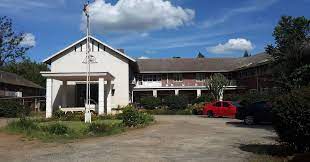Harare Children’s Home
-
$120,000.00
Funding Goal -
$0.00
Funds Raised -
∞
Days to go -
Target Goal
Campaign End Method
Campaign Story
The Weslyan Methodist Synod established the Harare Children’s Home in 1918, after the 1918 flu epidemic and post-World War 1 depression had left 11 children homeless. A committee was formed, comprising 15 Ministers and laymen. Reverend Glyndr Davies chaired it. In January 1921 the first general meeting was held, and the first constitution was also adopted.
The Home was originally located in a building on Victoria Street (now Mbuya Nehanda Street). When the needs of the Home outgrew its location, it was moved to a building on Jameson Avenue
(now Samora Machel Avenue). Once again, the needs of the Home outgrew its location and in 1956 the Home moved to its present location at 2 Daventry Road, Eastlea, in Harare.
The Home’s present capacity is 110 children. Each House is made up of a family of 17 to 22 children, cared for by a House Matron and an assistant. Currently, the staff establishment of 29 employees enables the home to care for 81 children.
Having provided the children’s physical needs: bathing, eating, sleeping, and clothing, the mental needs of the children did not seem to have been addressed. Some of these children are at such a young, formative age that both their mental and physical needs are of equal importance. Mental needs refer to the individual attention and mental stimulation, especially where babies and toddlers are concerned.
The same concept applies to the older children. Individual attention, letting the children know that what they say and do is important, that someone is there watching them – is of crucial importance. Hence, it is of utmost importance that the Home engages the services of a resident psychologist. To complete the puzzle, the Home has acquired household equipment such as stoves, refrigerators and other kitchen utensils and has started a pilot project whereby it is introducing smaller units for the children to create as much of a family atmosphere as possible. This restructuring has been completed at Muriel House and is beginning in the other Houses.
These units will enable the House Matrons and workers at the Home to give individual attention to the children thereby making the situation at the Home much closer to that of a real family. This will enable each child to identify with a family from the first time he/she is admitted to the Home. The dining hall and laundry services however remain centralised within the Home for now.

